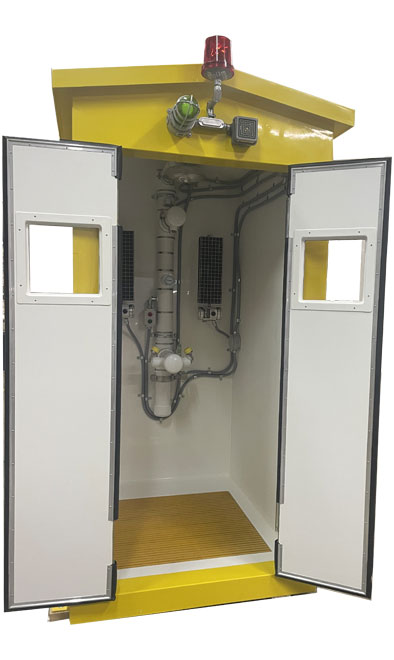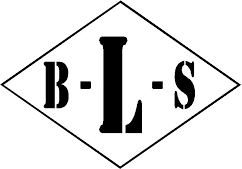Emergency Safety Showers: Ensuring Compliance and Proper Usage

In any industrial or laboratory setting where hazardous chemicals are handled, ensuring the safety of employees is paramount. Among the many safety protocols in place, the emergency safety shower stands as a critical component of workplace safety infrastructure. From chemical splashes to accidental exposures, an emergency safety shower provides the first line of defense in protecting employees from serious harm.
What is an Emergency Safety Shower?
An emergency safety shower is a piece of safety equipment designed to quickly drench a person who has been exposed to hazardous substances, such as chemicals, biological agents, or extreme heat. It typically consists of a showerhead capable of delivering a high volume of water over the entire body, ensuring contaminants are quickly and thoroughly rinsed away.
These showers are strategically installed in workplaces where there is a risk of chemical spills, splashes, or other hazardous exposures. They are often accompanied by emergency eye wash stations, which specifically target the eyes and face in case of exposure.
Why Immediate Action Matters
When an employee is exposed to a hazardous material, every second counts. Chemical burns, irritation, and absorption through the skin can happen in a matter of moments. The purpose of an emergency safety shower is to provide immediate decontamination—the faster the response, the better the chances of preventing serious injury or long-term health effects.
A delay in decontamination can lead to:
- Deep tissue damage
- Chemical absorption into the bloodstream
- Eye damage or blindness
- Inhalation hazards if vapors are present
Therefore, having a properly functioning and easily accessible emergency safety shower can mean the difference between a minor incident and a life-altering injury.
OSHA and ANSI Compliance for Safety Showers
Understanding the Standards
Compliance with regulatory standards is not optional when it comes to emergency safety showers. In the United States, the primary standards governing emergency shower equipment are set by:
- OSHA (Occupational Safety and Health Administration) under 29 CFR 1910.151(c), which mandates that “where the eyes or body of any person may be exposed to injurious corrosive materials, suitable facilities for quick drenching or flushing of the eyes and body shall be provided within the work area.”
- ANSI/ISEA Z358.1-2014 (and updates), which provides more detailed guidelines on the design, installation, performance, and maintenance of emergency showers and eye wash stations.
Key Compliance Points
To ensure compliance with ANSI/ISEA Z358.1 standards:
- Location: Showers must be located within 10 seconds (approximately 55 feet) of the hazard.
- Flow Rate: Emergency safety showers must deliver a minimum of 20 gallons per minute (GPM) for at least 15 minutes.
- Water Temperature: The delivered water must be tepid, defined as between 60°F and 100°F (16°C–38°C), to prevent thermal shock or additional harm.
- Accessibility: The path to the shower must be free of obstructions, with clear signage and proper lighting.
- Testing: Weekly activation and annual full testing are required to ensure the system works correctly.
Failure to comply with these standards can result in OSHA citations, hefty fines, and, most importantly, increased risk to employee safety.
Training Employees on Emergency Shower Usage
Even the most advanced safety shower is ineffective without proper training. Employees must know when, where, and how to use emergency showers in an emergency.
Core Training Components
Effective training programs should cover:
- Hazard Awareness: Employees must understand the risks associated with the chemicals or substances they work with and recognize situations that warrant immediate decontamination.
- Emergency Response Procedures: Clear, step-by-step instructions on what to do in the event of an exposure. For example:
- Activate the shower immediately—do not waste time undressing.
- Remain under the shower for at least 15 minutes, ensuring thorough rinsing.
- While flushing, remove contaminated clothing to prevent further exposure.
- Seek medical attention promptly after decontamination.
- Location Familiarity: Employees should be familiar with the exact location of all emergency showers and eye wash stations in their workspace.
- Practice Drills: Conduct regular drills to reinforce procedures and reduce panic during an actual emergency.
How to Conduct Regular Safety Checks
Routine inspections and maintenance are crucial to ensuring emergency safety showers function as intended. Here’s a checklist for maintaining your equipment:
- Weekly Activation: Run the shower and eye wash stations briefly to confirm proper operation and flush stagnant water.
- Annual Inspection: Conduct a comprehensive check that includes flow rate testing, temperature measurements, and functional assessment.
- Recordkeeping: Document all maintenance and testing activities to demonstrate compliance and track performance over time.
- Visual Inspections: Check for damage, leaks, blockages, or corrosion. Replace any worn or faulty parts immediately.
By combining hands-on training with regular maintenance, you create a culture of safety and preparedness.
Real-Life Case Studies on Safety Showers
Case Study 1: Chemical Spill in a Laboratory
A laboratory technician in a chemical processing facility accidentally knocked over a container of concentrated sulfuric acid, splashing it onto their torso and arms. Thanks to the proximity of the emergency safety shower, the technician was able to reach it within seconds and begin flushing the acid off their skin. After 20 minutes under the shower and follow-up medical treatment, the technician recovered without permanent injury. The company’s compliance with ANSI standards and effective training were critical to this positive outcome.
Case Study 2: Delayed Access in a Manufacturing Plant
In contrast, a manufacturing facility that lacked sufficient emergency showers faced a devastating incident. A worker exposed to a caustic cleaning solution could not access a shower quickly due to cluttered walkways and poorly marked equipment. The delay resulted in severe chemical burns requiring skin grafts and months of recovery. This case highlights the dire consequences of non-compliance and poor facility layout.
Case Study 3: A Success Story with B-L-S Industries, Inc.
One B-L-S Industries customer—a leading agricultural processing plant—installed a combination of standard emergency safety showers and custom-designed heated enclosures to protect workers in cold-weather environments. After an accidental ammonia leak, multiple employees were able to use the showers and eye wash stations effectively, preventing serious injuries. The plant’s investment in high-quality, compliant equipment from B-L-S Industries played a key role in safeguarding its team.
Prioritize Safety with B-L-S Industries, Inc.
Since 1976, B-L-S Industries, Inc. has been dedicated to manufacturing reliable, compliant, and durable emergency safety showers and eye wash stations. Based in Carl Junction, MO, we understand the unique challenges faced by industrial facilities and laboratories across the country.
Our commitment to workplace safety drives us to provide:
- Standard and custom solutions tailored to your environment.
- Heated shower enclosures for cold-weather protection.
- Expert guidance on selecting and maintaining the right safety equipment.
- Decades of industry knowledge you can trust.
Don’t wait until an emergency happens to realize the importance of proper safety measures. Let B-L-S Industries, Inc. help you safeguard your team with top-quality emergency safety showers and eye wash stations. Partner with B-L-S Industries and ensure your facility’s needs and explore our full range of safety products.
Your employees’ safety is too important to leave to chance. Contact us today to ensure you’re prepared for the unexpected.
